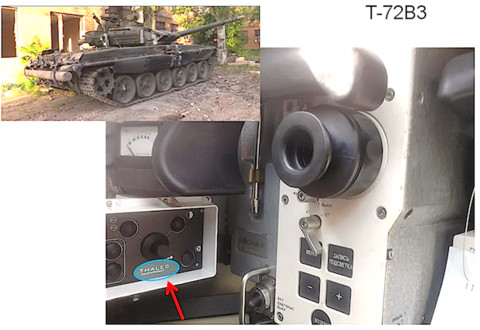T-14 Armata
- Thread starter Nirvana
- Start date
More options
Who Replied?Tactical Frog
New Member
- Joined
- Jan 31, 2016
- Messages
- 1,542
- Likes
- 2,279
Info a bit old but I thought worth a read .
https://euobserver.com/investigations/129953
By ANDREW RETTMAN
BRUSSELS, 25. AUG 2015, 09:21
Russian tanks are using French technology on the battlefields of east Ukraine. But will Russia’s new “star” tank, the Armata T-14, also rely on EU components despite the arms embargo?
France recently made headlines by cancelling its Mistral warships deal with Russia due to the Ukraine conflict.
Russia wanted them, in part, because they contain advanced command-and-control technology for amphibious assaults.
But French transfer of military technology to Russia goes further.
Ukraine, last August near the town of Ilovaysk, captured a Russian T-72 tank from pro-Russia fighters. The fighters then recaptured it and Russian TV broadcast an image of the inside, which, according to Igor Sutyagin, an expert at Rusi, a British defence think tank, shows a thermal-imaging fire control system made by French firm Thales.
Russian manufacturer Uralvagonzavod has also published photos of its T-90 tank, which show fire control components made by a Thales subsidiary, Thompson CSF Optronique. The Russian side is also using T-90s in Ukraine.
Fire control systems are crucial to a tank’s performance.
“It’s no good having great armour and a great gun if you can’t see your enemy and if you can’t hit them when you do”, Nick de Larrinaga, an analyst at IHS Janes, a UK defence consultancy, told this website.
The Thales exports to Russia are no secret and began long before the EU imposed its Russia arms ban, in July last year.
The French firm started selling its systems to Russian arms-maker Rosoboronexport, which works hand-in-hand with Uralvagonzavod, in 2007.
It’s believed to have delivered more than 1,000 so far.
Thales, in 2012, also let Rosoboronexport manufacture the systems under licence at a facility in Vologda, north of Moscow.
Neither France nor Russia do transparency on defence contracts.
Both sides’ officials declined to tell EUobserver if Thales still works with Rosoboronexport despite the EU ban.
Thales also doesn’t do much transparency. Its spokeswoman, Sonia Le Guevel, said only that: “Thales [has] strictly respected sanctions towards Russia”.
She also said it “abides by the legislation concerning … sub-systems and components embedded in equipment”.
Compliance
Sanctions compliance need not mean no more exports, however.
The EU measures specifically target Rosoboronexport, blacklisting its CEO, and Uralvagonzavod.
But France persuaded EU states to say contracts concluded before 1 August 2014 are exempt.
This means that if Thales and Rosoboronexport have an old, loosely-worded “framework” contract, which doesn’t specify the number of units to be delivered, Thales can keep selling systems, components, and related services, while having “strictly respected” the EU ban.
In any case, EU reporting obligations show a volume of France-Russia transfers in the run-up to the Ukraine crisis in 2013.
France granted permits for €194.2 million of exports in the ML 5, ML11, and ML15 categories.
The categories cover “imaging … equipment”, “fire control, and related … equipment”, and “electronic equipment” for military use.
French documents also say that in first-quarter 2014, when Russia annexed Crimea, French firms applied for €14.6 million of permits for ML5 and ML15 Russia exports.
Other French papers, published last November, after the EU sanctions, say Russia is still Thales’ third-top “priority market”.
Russian tiger
The Armata T-14 is the flagship of Russia’s rearmament programme.
It’s also a propaganda meme, featured in Russian video games, and feted as a “star” tank by state media.
It was unveiled at the 9 May WWII parade in Moscow, painted with the orange-and-black tiger stripes of the St. George’s ribbon, an old Russian emblem, which, last year, became the unofficial badge of pro-Russia irregulars in Ukraine.
Uralvagonzavod has produced about 30 T-14 prototypes.
They're being field-tested by the Russian army, with mass-producion to start in 2016, reaching 120 tanks/year by 2018.
Russian defence chiefs say the T-14 is fully Russian-made.
A French source, who asked not to be named, also told EUobserver: “The Armata … is not open to foreign suppliers (especially from the EU), so Thales is in no way involved”.
But details of what’s inside are classified.
Pavel Felgenhauer, a Russian military analyst, said: “Even if I did know, I wouldn’t tell you, because I live in Russia and I could be designated as aiding and abetting the enemy”.
IHS Janes’ De Larrinaga noted: “On the new Russian tank, the fire control system is protected by two armoured doors to shield it from small-arms fire. During the 9 May parade these remained closed, so it’s not been possible to identify it”.
He said the claim the T-14 is fully home-made might be true.
Russia imported the French systems because it was cheaper and faster than to modernise its military-industrial complex, not because it lacks know-how.
The IHS Janes expert said, for instance, that Russian-made thermal imagers for airforce missile seekers are “highly rated”.
He also said Rosoboronexport might have “replicated” the French technology by now.
Made in Russia?
But with T-14 mass-production to start next year, De Larrinaga believes it’s more likely it has French systems or components under the bonnet.
Russia began its military-industrial overhaul in 2010.
But De Larrinaga said it’ll “be very expensive, take a great deal of time, and possibly end up making an inferior product”.
He noted it would be much easier “to just take them [Thales products] off the older tanks and put them on the T-14”. He added that: “Thales might not know on what tanks its systems end up”.
Other experts agree.
Felgenhauer told EUobserver it’s “most likely” the T-14 uses French technology.
Dmitry Gorenburg, a Russian expert at CNA, a Washington-based NGO, said: “Since the Russian defence industry is known to be unable to produce all components of such systems domestically, it stands to reason it [French technology] has been used to some extent”.
“They may have resorted to using shell companies to circumvent [EU] sanctions”, he added.
Components
Two components in fire control systems are microbolometer arrays and screen matrices.
Microbolometer arrays capture infrared images without requiring cooling, making systems more efficient.
The screen matrix defines the sharpness of the image, making targets easier to identify.
For its part, Taja Global, a US cyber security firm, says it has evidence Russia tried to buy arrays from EU suppliers on the black.
The firm, in May, compiled a report which it shared with The Intercept, an investigative website.
It’s based on hacked emails from Alexey Beseda, the son of Sergei Beseda, a Russian intelligence officer.
It says Russia, in 2013, created several shell firms, including Cyclone-IR and Rayfast, which is registered in Cyprus, to buy arrays from Western firms because its defence chiefs saw the EU arms ban coming.
Rusi’s Sutyagin told EUobserver the T-14 also needs Western-made matrices.
He said even the older Thales models have a resolution of 754x576 pixels, but the best Russia can make have 640x512 pixels.
“The Armata needs a certain degree of Western support”, he noted.
He added that Thales isn’t the only potential source.
French firm Sagem has supplied thermal sights for Russian T-90s and electro optical infra-red systems for Russian Ka-52 attack helicopters.
Sutyagin also said Belarus, which sells arms and components to Russia, uses French products in its thermal gun sights despite the EU’s, separate, Belarus arms ban.
https://euobserver.com/investigations/129953
By ANDREW RETTMAN
BRUSSELS, 25. AUG 2015, 09:21
Russian tanks are using French technology on the battlefields of east Ukraine. But will Russia’s new “star” tank, the Armata T-14, also rely on EU components despite the arms embargo?
France recently made headlines by cancelling its Mistral warships deal with Russia due to the Ukraine conflict.
Russia wanted them, in part, because they contain advanced command-and-control technology for amphibious assaults.
But French transfer of military technology to Russia goes further.
Ukraine, last August near the town of Ilovaysk, captured a Russian T-72 tank from pro-Russia fighters. The fighters then recaptured it and Russian TV broadcast an image of the inside, which, according to Igor Sutyagin, an expert at Rusi, a British defence think tank, shows a thermal-imaging fire control system made by French firm Thales.
Russian manufacturer Uralvagonzavod has also published photos of its T-90 tank, which show fire control components made by a Thales subsidiary, Thompson CSF Optronique. The Russian side is also using T-90s in Ukraine.
Fire control systems are crucial to a tank’s performance.
“It’s no good having great armour and a great gun if you can’t see your enemy and if you can’t hit them when you do”, Nick de Larrinaga, an analyst at IHS Janes, a UK defence consultancy, told this website.
The Thales exports to Russia are no secret and began long before the EU imposed its Russia arms ban, in July last year.
The French firm started selling its systems to Russian arms-maker Rosoboronexport, which works hand-in-hand with Uralvagonzavod, in 2007.
It’s believed to have delivered more than 1,000 so far.
Thales, in 2012, also let Rosoboronexport manufacture the systems under licence at a facility in Vologda, north of Moscow.
Neither France nor Russia do transparency on defence contracts.
Both sides’ officials declined to tell EUobserver if Thales still works with Rosoboronexport despite the EU ban.
Thales also doesn’t do much transparency. Its spokeswoman, Sonia Le Guevel, said only that: “Thales [has] strictly respected sanctions towards Russia”.
She also said it “abides by the legislation concerning … sub-systems and components embedded in equipment”.
Compliance
Sanctions compliance need not mean no more exports, however.
The EU measures specifically target Rosoboronexport, blacklisting its CEO, and Uralvagonzavod.
But France persuaded EU states to say contracts concluded before 1 August 2014 are exempt.
This means that if Thales and Rosoboronexport have an old, loosely-worded “framework” contract, which doesn’t specify the number of units to be delivered, Thales can keep selling systems, components, and related services, while having “strictly respected” the EU ban.
In any case, EU reporting obligations show a volume of France-Russia transfers in the run-up to the Ukraine crisis in 2013.
France granted permits for €194.2 million of exports in the ML 5, ML11, and ML15 categories.
The categories cover “imaging … equipment”, “fire control, and related … equipment”, and “electronic equipment” for military use.
French documents also say that in first-quarter 2014, when Russia annexed Crimea, French firms applied for €14.6 million of permits for ML5 and ML15 Russia exports.
Other French papers, published last November, after the EU sanctions, say Russia is still Thales’ third-top “priority market”.
Russian tiger
The Armata T-14 is the flagship of Russia’s rearmament programme.
It’s also a propaganda meme, featured in Russian video games, and feted as a “star” tank by state media.
It was unveiled at the 9 May WWII parade in Moscow, painted with the orange-and-black tiger stripes of the St. George’s ribbon, an old Russian emblem, which, last year, became the unofficial badge of pro-Russia irregulars in Ukraine.
Uralvagonzavod has produced about 30 T-14 prototypes.
They're being field-tested by the Russian army, with mass-producion to start in 2016, reaching 120 tanks/year by 2018.
Russian defence chiefs say the T-14 is fully Russian-made.
A French source, who asked not to be named, also told EUobserver: “The Armata … is not open to foreign suppliers (especially from the EU), so Thales is in no way involved”.
But details of what’s inside are classified.
Pavel Felgenhauer, a Russian military analyst, said: “Even if I did know, I wouldn’t tell you, because I live in Russia and I could be designated as aiding and abetting the enemy”.
IHS Janes’ De Larrinaga noted: “On the new Russian tank, the fire control system is protected by two armoured doors to shield it from small-arms fire. During the 9 May parade these remained closed, so it’s not been possible to identify it”.
He said the claim the T-14 is fully home-made might be true.
Russia imported the French systems because it was cheaper and faster than to modernise its military-industrial complex, not because it lacks know-how.
The IHS Janes expert said, for instance, that Russian-made thermal imagers for airforce missile seekers are “highly rated”.
He also said Rosoboronexport might have “replicated” the French technology by now.
Made in Russia?
But with T-14 mass-production to start next year, De Larrinaga believes it’s more likely it has French systems or components under the bonnet.
Russia began its military-industrial overhaul in 2010.
But De Larrinaga said it’ll “be very expensive, take a great deal of time, and possibly end up making an inferior product”.
He noted it would be much easier “to just take them [Thales products] off the older tanks and put them on the T-14”. He added that: “Thales might not know on what tanks its systems end up”.
Other experts agree.
Felgenhauer told EUobserver it’s “most likely” the T-14 uses French technology.
Dmitry Gorenburg, a Russian expert at CNA, a Washington-based NGO, said: “Since the Russian defence industry is known to be unable to produce all components of such systems domestically, it stands to reason it [French technology] has been used to some extent”.
“They may have resorted to using shell companies to circumvent [EU] sanctions”, he added.
Components
Two components in fire control systems are microbolometer arrays and screen matrices.
Microbolometer arrays capture infrared images without requiring cooling, making systems more efficient.
The screen matrix defines the sharpness of the image, making targets easier to identify.
For its part, Taja Global, a US cyber security firm, says it has evidence Russia tried to buy arrays from EU suppliers on the black.
The firm, in May, compiled a report which it shared with The Intercept, an investigative website.
It’s based on hacked emails from Alexey Beseda, the son of Sergei Beseda, a Russian intelligence officer.
It says Russia, in 2013, created several shell firms, including Cyclone-IR and Rayfast, which is registered in Cyprus, to buy arrays from Western firms because its defence chiefs saw the EU arms ban coming.
Rusi’s Sutyagin told EUobserver the T-14 also needs Western-made matrices.
He said even the older Thales models have a resolution of 754x576 pixels, but the best Russia can make have 640x512 pixels.
“The Armata needs a certain degree of Western support”, he noted.
He added that Thales isn’t the only potential source.
French firm Sagem has supplied thermal sights for Russian T-90s and electro optical infra-red systems for Russian Ka-52 attack helicopters.
Sutyagin also said Belarus, which sells arms and components to Russia, uses French products in its thermal gun sights despite the EU’s, separate, Belarus arms ban.
Ural
New Member
- Joined
- Aug 5, 2016
- Messages
- 44
- Likes
- 49
Pilot batch: Russian military get first T-14 Armata tanks
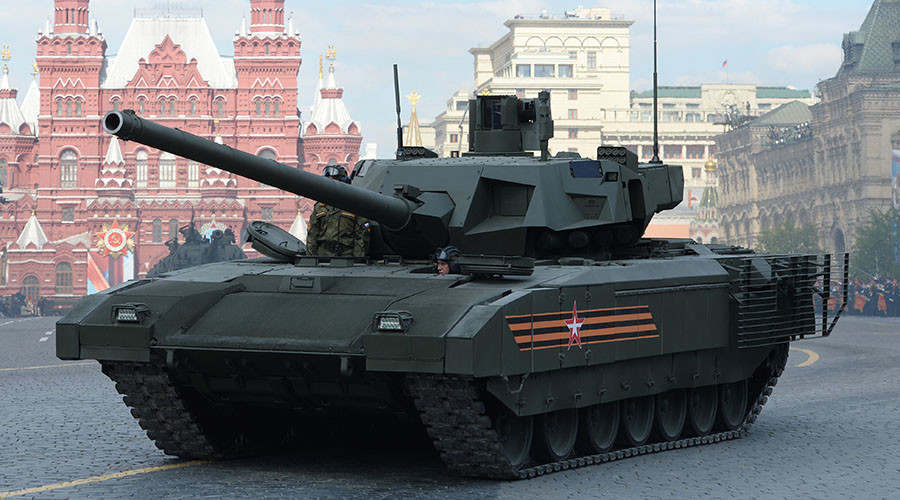
A T-14 tank on the Armata tracked platform. © Iliya Pitalev / Sputnik
The Russian Defense Ministry has signed an order for a pilot batch of more than 100 state of the art T-14 “Armata” tanks, the first of which are already arriving for trials.
The deal signed with Uralvagonzavod, Russia’s leading tank manufacturer and creator of the T-14 “Armata,” will see the first batch used in comprehensive military tests simulating combat situations.
“We have a contract for a pilot batch of more than 100 machines. They are already arriving for trials,” Deputy Defense Minister Jury Borisov reported, as quoted by RIA on Tuesday.
The announcement came during a military forum being conducted outside Moscow called “Army 2016.” Officials have yet to disclose the exact cost of the deal.
The program to supply the Russian army with T-14s was initially planned to last until 2020, but, according to Uralvagonzavod chief Oleg Sienko, it is now due to be extended until 2025.
The Russian military estimates that it will need 2,300 of the state of the art tanks.
The T-14 was revealed for the first time on April 29th of 2015 at a rehearsal for the Victory Day parade in Moscow, but its turret was masked then. The official presentation was made on May 9th during the actual V-Day parade.
One of tank’s main advantages is its fully automated and unmanned turret, as well as HD cameras that provide an outside view.
It is capable of moving at an estimated speed of up to 90 kilometers per hour, more than 20 kilometers per hour faster than the Abrams M1A2, the US’ mainstay.
The 125mm cannon the T14 is currently equipped with is due to be upgraded to 152mm in later versions.
The Russian military and Uralvagonzavod’s engineers also promise to turn the T-14 into a completely automated system that can be operated on the battlefield with only a remote control.
“Unmanned Armata is the machine of the future – we have no doubts about it. Both we and the military are sure,” Sienko said back in April of this year.
Among other plans for the tank’s future, the producers plan to attach a drone to the T-14 in order to give it a decisive advantage in battle.
The Armata’s chassis also serves as a platform for the production of other types of armored vehicles, such as self-propelled guns and infantry fighting vehicles.
https://www.rt.com/news/358445-armata-tank-deal-test/
pmaitra
New Member
- Joined
- Mar 10, 2009
- Messages
- 33,262
- Likes
- 19,600
Armata in Syria? Interesting. @gadeshi, so you have any further information on this? Syria would be a nice place to find out vulnerabilities of this tank and have it battle tested.
spotted in syria, not sure about source (dont speak arabic...)
- Joined
- Feb 7, 2011
- Messages
- 7,701
- Likes
- 9,101
But are they in serial production?Armata in Syria? Interesting. @gadeshi, so you have any further information on this? Syria would be a nice place to find out vulnerabilities of this tank and have it battle tested.
Combat crews already trained and ready?

pmaitra
New Member
- Joined
- Mar 10, 2009
- Messages
- 33,262
- Likes
- 19,600
They are in limited production. Recently, I saw some videos of the T-14 recently, being tested, obviously.But are they in serial production?
Combat crews already trained and ready?

gadeshi
New Member
- Joined
- Jun 19, 2013
- Messages
- 9,223
- Likes
- 6,636
It is VERY obsoleted info in this article.Info a bit old but I thought worth a read .
https://euobserver.com/investigations/129953
By ANDREW RETTMAN
BRUSSELS, 25. AUG 2015, 09:21
Russian tanks are using French technology on the battlefields of east Ukraine. But will Russia’s new “star” tank, the Armata T-14, also rely on EU components despite the arms embargo?
France recently made headlines by cancelling its Mistral warships deal with Russia due to the Ukraine conflict.
Russia wanted them, in part, because they contain advanced command-and-control technology for amphibious assaults.
But French transfer of military technology to Russia goes further.
Ukraine, last August near the town of Ilovaysk, captured a Russian T-72 tank from pro-Russia fighters. The fighters then recaptured it and Russian TV broadcast an image of the inside, which, according to Igor Sutyagin, an expert at Rusi, a British defence think tank, shows a thermal-imaging fire control system made by French firm Thales.
Russian manufacturer Uralvagonzavod has also published photos of its T-90 tank, which show fire control components made by a Thales subsidiary, Thompson CSF Optronique. The Russian side is also using T-90s in Ukraine.
Fire control systems are crucial to a tank’s performance.
“It’s no good having great armour and a great gun if you can’t see your enemy and if you can’t hit them when you do”, Nick de Larrinaga, an analyst at IHS Janes, a UK defence consultancy, told this website.
The Thales exports to Russia are no secret and began long before the EU imposed its Russia arms ban, in July last year.
The French firm started selling its systems to Russian arms-maker Rosoboronexport, which works hand-in-hand with Uralvagonzavod, in 2007.
It’s believed to have delivered more than 1,000 so far.
Thales, in 2012, also let Rosoboronexport manufacture the systems under licence at a facility in Vologda, north of Moscow.
Neither France nor Russia do transparency on defence contracts.
Both sides’ officials declined to tell EUobserver if Thales still works with Rosoboronexport despite the EU ban.
Thales also doesn’t do much transparency. Its spokeswoman, Sonia Le Guevel, said only that: “Thales [has] strictly respected sanctions towards Russia”.
She also said it “abides by the legislation concerning … sub-systems and components embedded in equipment”.
Compliance
Sanctions compliance need not mean no more exports, however.
The EU measures specifically target Rosoboronexport, blacklisting its CEO, and Uralvagonzavod.
But France persuaded EU states to say contracts concluded before 1 August 2014 are exempt.
This means that if Thales and Rosoboronexport have an old, loosely-worded “framework” contract, which doesn’t specify the number of units to be delivered, Thales can keep selling systems, components, and related services, while having “strictly respected” the EU ban.
In any case, EU reporting obligations show a volume of France-Russia transfers in the run-up to the Ukraine crisis in 2013.
France granted permits for €194.2 million of exports in the ML 5, ML11, and ML15 categories.
The categories cover “imaging … equipment”, “fire control, and related … equipment”, and “electronic equipment” for military use.
French documents also say that in first-quarter 2014, when Russia annexed Crimea, French firms applied for €14.6 million of permits for ML5 and ML15 Russia exports.
Other French papers, published last November, after the EU sanctions, say Russia is still Thales’ third-top “priority market”.
Russian tiger
The Armata T-14 is the flagship of Russia’s rearmament programme.
It’s also a propaganda meme, featured in Russian video games, and feted as a “star” tank by state media.
It was unveiled at the 9 May WWII parade in Moscow, painted with the orange-and-black tiger stripes of the St. George’s ribbon, an old Russian emblem, which, last year, became the unofficial badge of pro-Russia irregulars in Ukraine.
Uralvagonzavod has produced about 30 T-14 prototypes.
They're being field-tested by the Russian army, with mass-producion to start in 2016, reaching 120 tanks/year by 2018.
Russian defence chiefs say the T-14 is fully Russian-made.
A French source, who asked not to be named, also told EUobserver: “The Armata … is not open to foreign suppliers (especially from the EU), so Thales is in no way involved”.
But details of what’s inside are classified.
Pavel Felgenhauer, a Russian military analyst, said: “Even if I did know, I wouldn’t tell you, because I live in Russia and I could be designated as aiding and abetting the enemy”.
IHS Janes’ De Larrinaga noted: “On the new Russian tank, the fire control system is protected by two armoured doors to shield it from small-arms fire. During the 9 May parade these remained closed, so it’s not been possible to identify it”.
He said the claim the T-14 is fully home-made might be true.
Russia imported the French systems because it was cheaper and faster than to modernise its military-industrial complex, not because it lacks know-how.
The IHS Janes expert said, for instance, that Russian-made thermal imagers for airforce missile seekers are “highly rated”.
He also said Rosoboronexport might have “replicated” the French technology by now.
Made in Russia?
But with T-14 mass-production to start next year, De Larrinaga believes it’s more likely it has French systems or components under the bonnet.
Russia began its military-industrial overhaul in 2010.
But De Larrinaga said it’ll “be very expensive, take a great deal of time, and possibly end up making an inferior product”.
He noted it would be much easier “to just take them [Thales products] off the older tanks and put them on the T-14”. He added that: “Thales might not know on what tanks its systems end up”.
Other experts agree.
Felgenhauer told EUobserver it’s “most likely” the T-14 uses French technology.
Dmitry Gorenburg, a Russian expert at CNA, a Washington-based NGO, said: “Since the Russian defence industry is known to be unable to produce all components of such systems domestically, it stands to reason it [French technology] has been used to some extent”.
“They may have resorted to using shell companies to circumvent [EU] sanctions”, he added.
Components
Two components in fire control systems are microbolometer arrays and screen matrices.
Microbolometer arrays capture infrared images without requiring cooling, making systems more efficient.
The screen matrix defines the sharpness of the image, making targets easier to identify.
For its part, Taja Global, a US cyber security firm, says it has evidence Russia tried to buy arrays from EU suppliers on the black.
The firm, in May, compiled a report which it shared with The Intercept, an investigative website.
It’s based on hacked emails from Alexey Beseda, the son of Sergei Beseda, a Russian intelligence officer.
It says Russia, in 2013, created several shell firms, including Cyclone-IR and Rayfast, which is registered in Cyprus, to buy arrays from Western firms because its defence chiefs saw the EU arms ban coming.
Rusi’s Sutyagin told EUobserver the T-14 also needs Western-made matrices.
He said even the older Thales models have a resolution of 754x576 pixels, but the best Russia can make have 640x512 pixels.
“The Armata needs a certain degree of Western support”, he noted.
He added that Thales isn’t the only potential source.
French firm Sagem has supplied thermal sights for Russian T-90s and electro optical infra-red systems for Russian Ka-52 attack helicopters.
Sutyagin also said Belarus, which sells arms and components to Russia, uses French products in its thermal gun sights despite the EU’s, separate, Belarus arms ban.
Author lacks more than 5 years of info here
T-72B3 utilizes Belorussian Sosna-U IR sights which is license-built Thales Catherine systems.
T-90A/AM use completely indigenous sights with 800x600 pixels indigenous non-cooling matrices developped and produced by OPK and Shwabe concerns. Thales sights are an export version (T-90S/MS) options only.
Armata platform (as well as Kurganets-25 and Bumerang platforms) utilize completely indigenous bispectral (IR/UV) non-cooling matrices by OPK and Shwabe JV that have resolution of 1024x768 pixels.
I've posted the info about those matrices serial production start 2 or 3 months ago in Russia to Discuss topic.
Info abourt Thales even participated in Ka-52 program is a bullshit from beginning to the end.
It might be the option for export versions only.
So, Western guys are stupid mamals as always.
Gessler
New Member
- Joined
- Jan 10, 2016
- Messages
- 2,312
- Likes
- 11,249
It's a CGI for god's sake...
spotted in syria, not sure about source (dont speak arabic...)
...damn this 30-character rule.
gadeshi
New Member
- Joined
- Jun 19, 2013
- Messages
- 9,223
- Likes
- 6,636
c
So no Syria or any other hot place possible yet.
They are at first LRIP (100 pieces) stage that will be completed in 2018.But are they in serial production?
ombat crews already trained and ready?

So no Syria or any other hot place possible yet.
Bhartiya Sainik
New Member
- Joined
- Dec 14, 2021
- Messages
- 457
- Likes
- 1,224
T-14 Armata MBT in a videogame, slightly modified.




Super falcon
New Member
- Joined
- Nov 22, 2021
- Messages
- 870
- Likes
- 806
Here is the armata killer apex predator from Germany
blackjack
New Member
- Joined
- Dec 14, 2021
- Messages
- 2,496
- Likes
- 5,329
what are the specs even?Here is the armata killer apex predator from Germany
Corvus Splendens
New Member
- Joined
- Dec 8, 2021
- Messages
- 4,185
- Likes
- 27,015
Rheinmetall's 130mm L52 Smoothbore FGS, developed on the basis of the L51 shown below. Gun has an autoloader with 20 rounds in the feed. Rheinmetall claims over 50% extra effective range over the Leo 2's gun.what are the specs even?
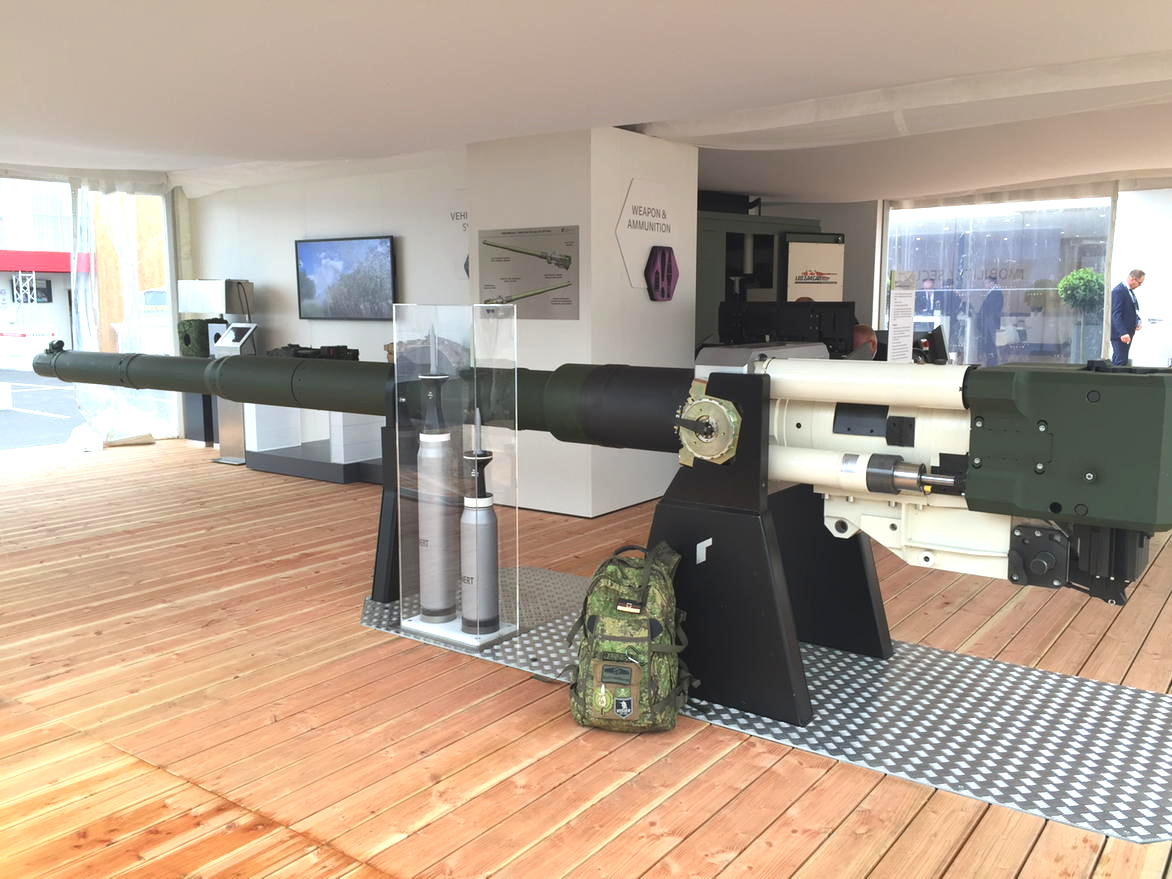
Leo 2A7 based hull. Full 360 awareness because sensors covering every angle. Highly digitized crew positions with large MFDs. Data Link, Hunter-Killer capable, Mirrored controls for every crew member.
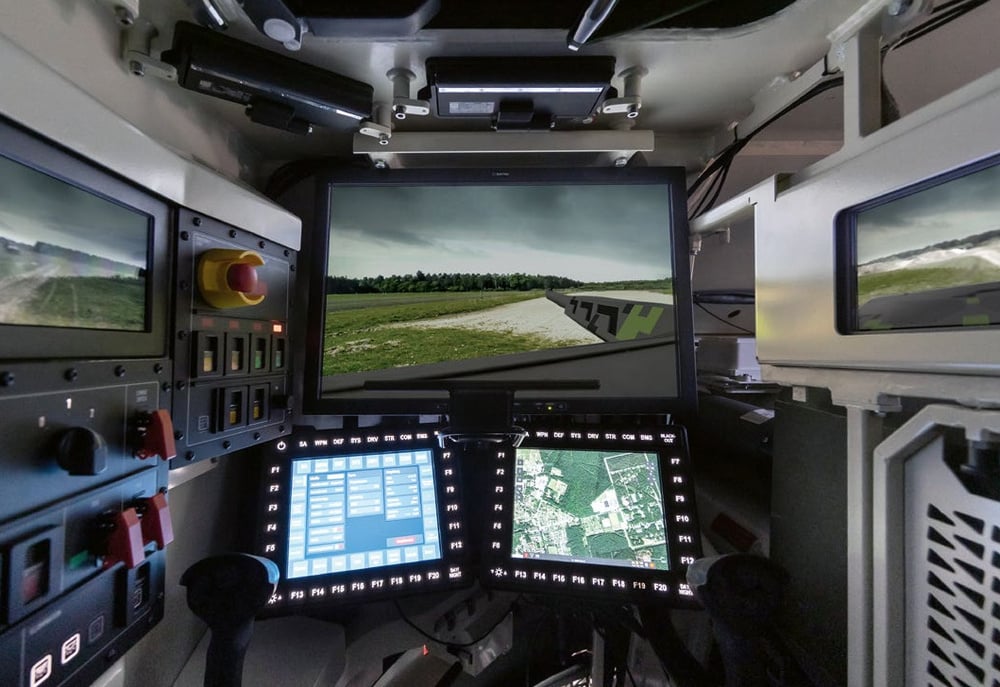
Fires the UVision HERO 120 Loitering Ammunition
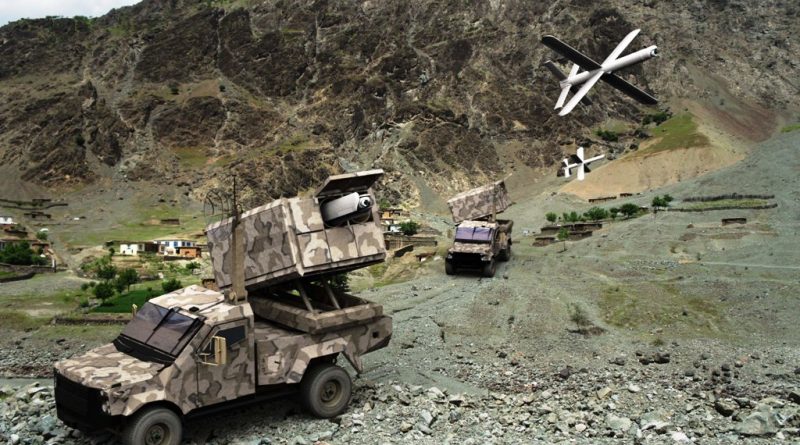
The Panther is configured with a pre-shot detection capability, enabling it to strike first. Threats from above are defeated by the Rheinmetall TAPS (Top Attack Protection System).
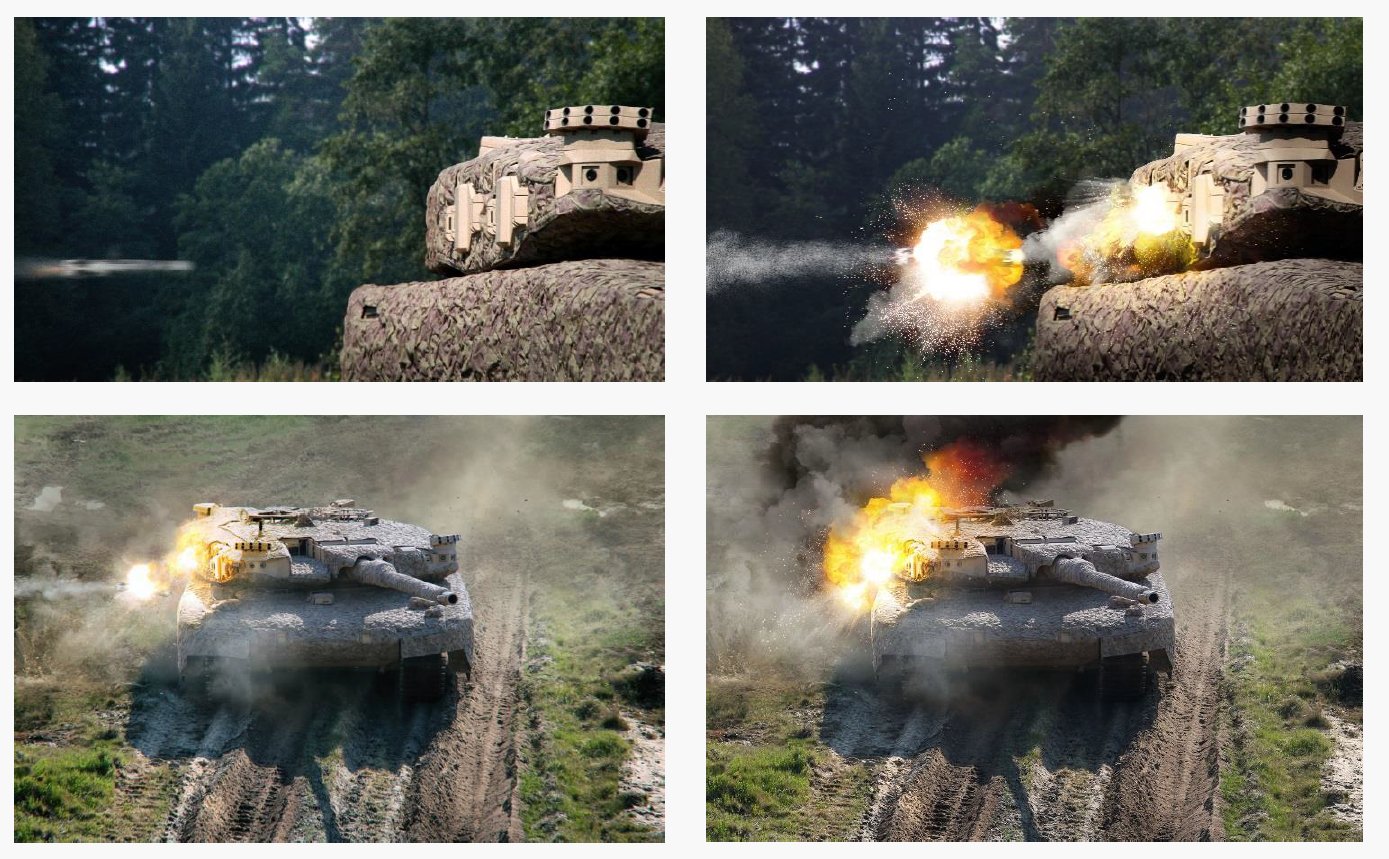
The ROSY smoke obscurance system is provided as part of the survivability system, which fully integrates with the digitized architecture to allow additional defence measures.
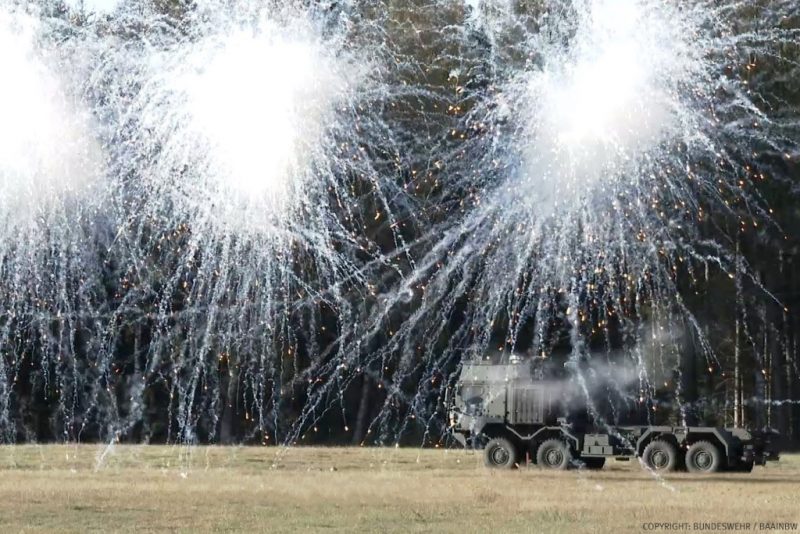
Tank can also carry and deploy MissionMaster UGVs
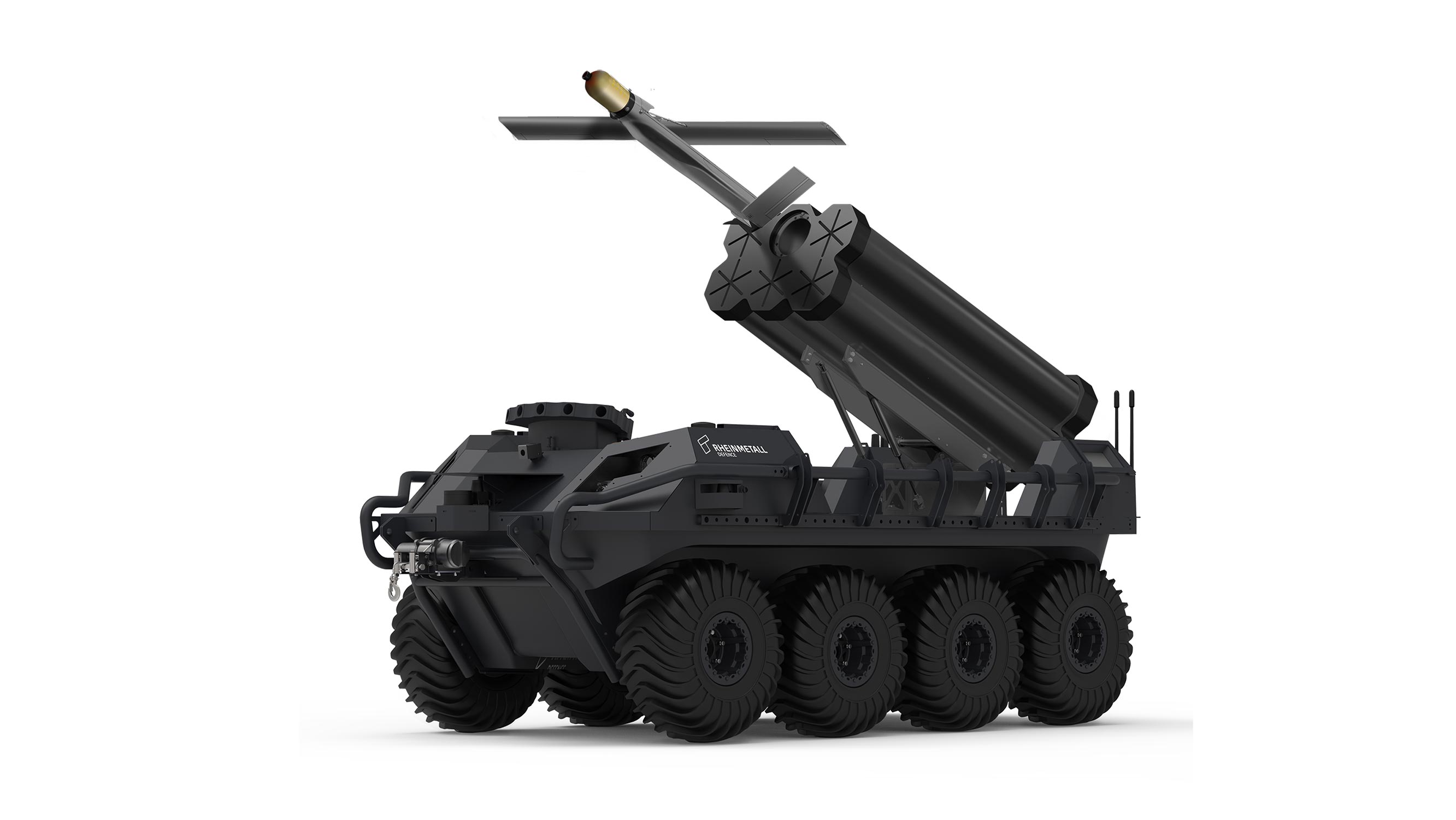
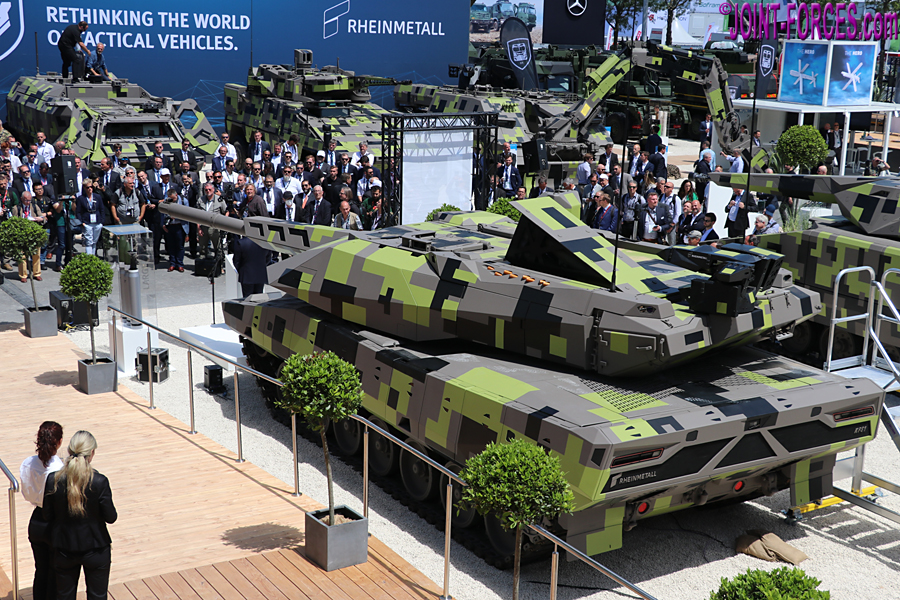
Full Combat weight just below 60 tonnes. Combat Range 500 km.
MTU MT883 Ka-500/501 27.4 Liter Twin-Turbo 90° V12 Diesel Engine, Air and Oil Cooled, delivering 1500 HP @ 2600 RPM and 5000Nm of Torque @ 2000 RPM

Bhartiya Sainik
New Member
- Joined
- Dec 14, 2021
- Messages
- 457
- Likes
- 1,224
On KF-51 Panther I can't see any static or moving APS launcher, just the EO sensors.Threats from above are defeated by the Rheinmetall TAPS (Top Attack Protection System).
Leo-2 ATD is Advanced Tech Demonstrator with the AMAP-ADS. ATD is not in production.
Last edited:
Super falcon
New Member
- Joined
- Nov 22, 2021
- Messages
- 870
- Likes
- 806
Sir they have released few specs till nowwhat are the specs even?
Super falcon
New Member
- Joined
- Nov 22, 2021
- Messages
- 870
- Likes
- 806
But they are hell of a tanks from Germany
Articles
-
India Strikes Back: Operation Snow Leopard - Part 1
- mist_consecutive
- Replies: 9
-
Aftermath Galwan : Who holds the fort ?
- mist_consecutive
- Replies: 33
-
The Terrible Cost of Presidential Racism(Nixon & Kissinger towards India).
- ezsasa
- Replies: 40
-
Modern BVR Air Combat - Part 2
- mist_consecutive
- Replies: 22
-
Civil & Military Bureaucracy and related discussions
- daya
- Replies: 32

